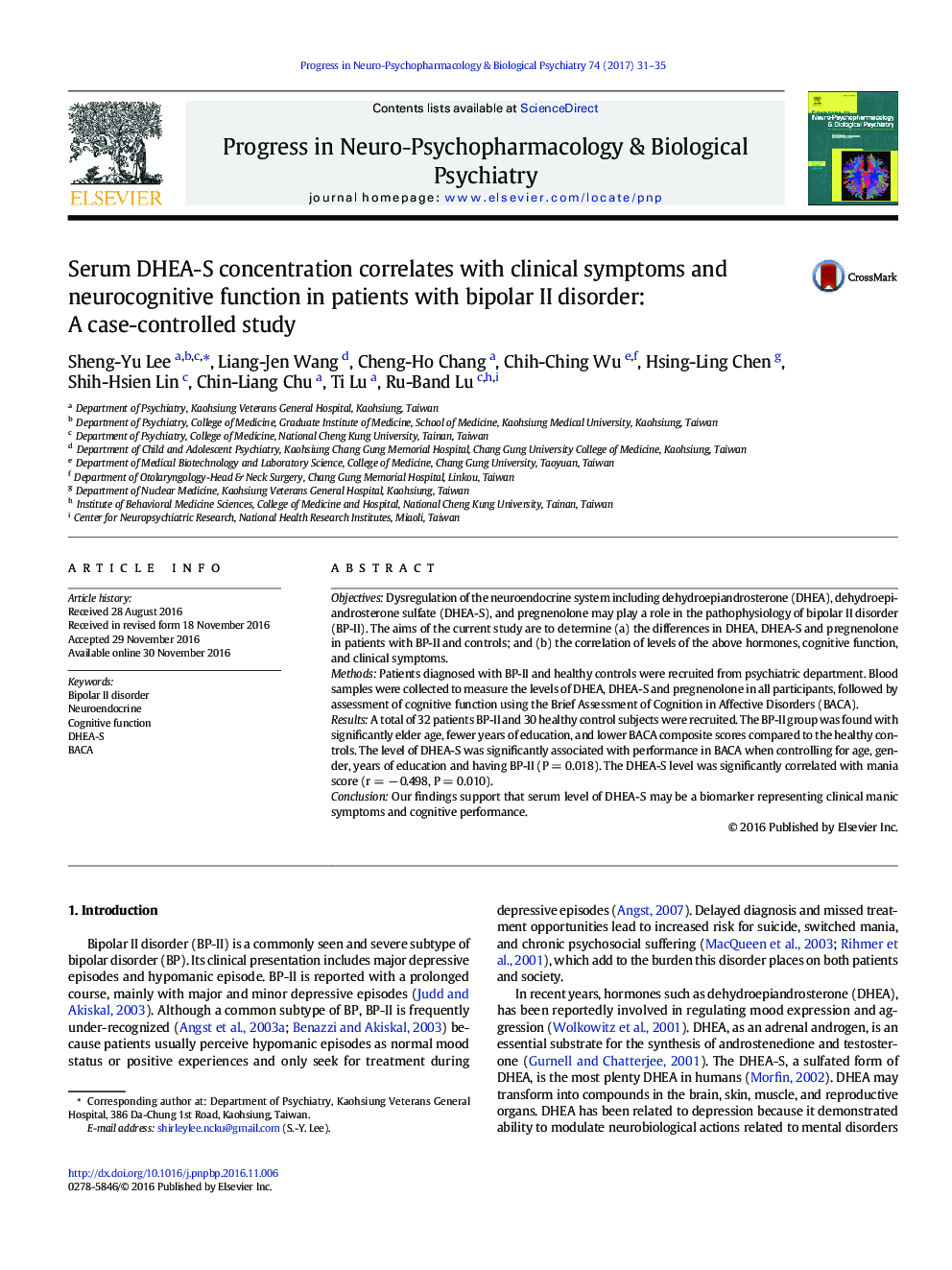| Article ID | Journal | Published Year | Pages | File Type |
|---|---|---|---|---|
| 5558113 | Progress in Neuro-Psychopharmacology and Biological Psychiatry | 2017 | 5 Pages |
â¢Dysregulation of the neuroendocrine system may be associated with BP-II.â¢BP-II had poorer neuropsychological performance compared to controls.â¢The DHEA-S level was associated with neuropsychological performance.â¢The DHEA-S level was inversely correlated with mania score.â¢DHEA-S level may be a biomarker for manic symptoms and cognitive performance.
ObjectivesDysregulation of the neuroendocrine system including dehydroepiandrosterone (DHEA), dehydroepiandrosterone sulfate (DHEA-S), and pregnenolone may play a role in the pathophysiology of bipolar II disorder (BP-II). The aims of the current study are to determine (a) the differences in DHEA, DHEA-S and pregnenolone in patients with BP-II and controls; and (b) the correlation of levels of the above hormones, cognitive function, and clinical symptoms.MethodsPatients diagnosed with BP-II and healthy controls were recruited from psychiatric department. Blood samples were collected to measure the levels of DHEA, DHEA-S and pregnenolone in all participants, followed by assessment of cognitive function using the Brief Assessment of Cognition in Affective Disorders (BACA).ResultsA total of 32 patients BP-II and 30 healthy control subjects were recruited. The BP-II group was found with significantly elder age, fewer years of education, and lower BACA composite scores compared to the healthy controls. The level of DHEA-S was significantly associated with performance in BACA when controlling for age, gender, years of education and having BP-II (P = 0.018). The DHEA-S level was significantly correlated with mania score (r = â 0.498, P = 0.010).ConclusionOur findings support that serum level of DHEA-S may be a biomarker representing clinical manic symptoms and cognitive performance.
